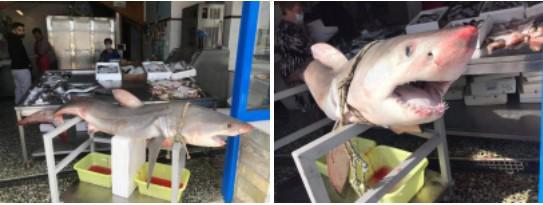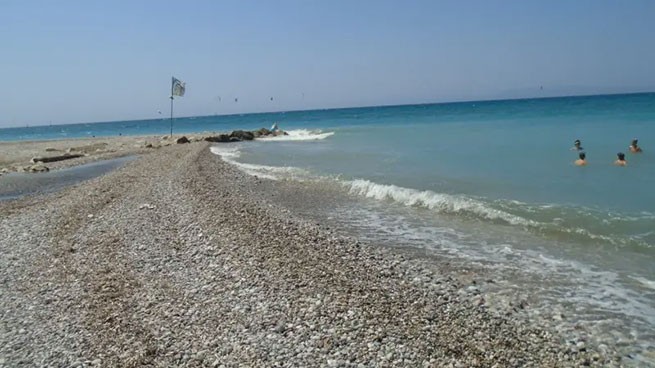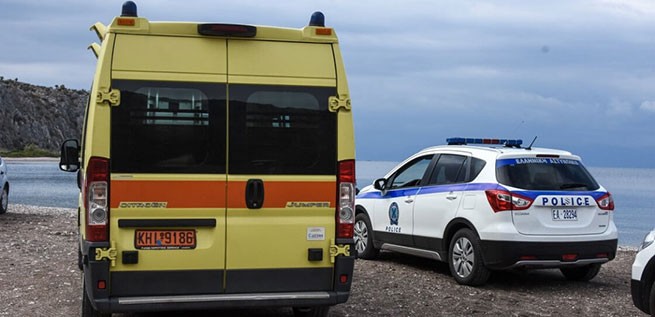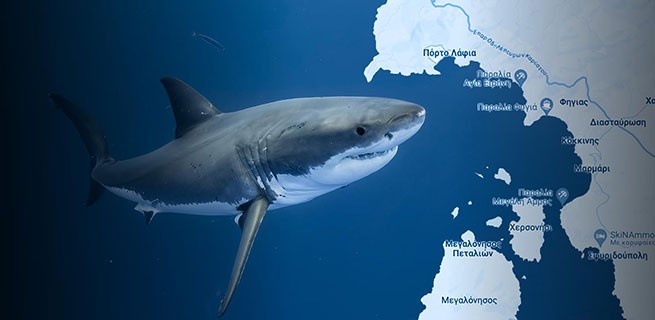A fisherman from Porto Lafia in southern Evia spotted a great white shark entangled in his nets! Experts say it's young great white shark (Carcharodon carcharias).
A fisherman from Porto Lafia in southern Evia spotted a white shark entangled in his nets! Experts believe it is a young great white shark (Carcharodon carcharias). pic.twitter.com/mUzpWOPraT
— Athens News (@russianathens) August 23, 2024
According to boatfishing.gr, its special characteristics – the shape of the head, eyes and teeth – leave no doubt that it belongs to this species. Although there are other species, such as the mako (Isurus oxyrinchus) or the lamia (Lamna Nasus), which may resemble the great white shark, they do not have the same characteristic teeth, which confirms the identification of this species.
Catch Great White Shark – a rare occurrence in Greek waters, which makes this case even more remarkable. It is worth noting thatGreat White Sharkalong with other protected species of sharks and rays, is included in Annex II of the Protocol on Species and Biodiversity in the Mediterranean to the Barcelona Convention.
The law clearly states that “catching, keeping on board, unloading, transporting, storing and selling or offering for sale are strictly prohibited” by law. EUin accordance with Regulations 2015/2102 (Article 16i) and 2019/1241 (Annex I).
The great white shark Carcharodon carcharias (Linnaeus, 1758) is listed as an endangered species of marine inhabitants of the World Ocean; it is the largest predatory fish in the world.

Unfortunately, various rumors and speculations regularly spread by a wide range of media outlets have given this species of fish an extremely negative reputation, presenting the image of the white shark as a ruthless and voracious predator.
The Mediterranean white shark population is classified as “critically endangered” (CR) according to the Red List of Threatened Species due to a dramatic decline in its population in recent years (up to 96% in some areas). Although this species is not targeted for commercial fishing in the Mediterranean, sharks are often accidentally caught in nets (bottom trawls, etc.), which in itself represents a major threat to a population already in danger of extinction.
Ichthyologists note that in connection with warming The Mediterranean Sea has seen sharks appearing much more frequently off the coast of Greece. There are more than 70 species of sharks in the Greek seas. However, experts say there has been an increase in the presence of sharks over the past ten years. especially white sharks.
Following the last two appearances of dangerous marine predators in Glyfada And Hair Bathers “tremble with fear” as they enter the sea.
In particular, a 3.5-metre-long shark was spotted in the port of Volos on the morning of May 5, 2024, causing terror in the area, Glyfada At the end of May 2024, a shark was circling the pier and in Volos it surprised the townspeople by wandering into shallow water.
Sharks are not as dangerous as is commonly believed. In conversation with Newsbomb.gr Thodoris Tsimpidis explainedWhat The appearance of sharks is not unprecedented, as this species has been living in our seas for thousands of years, from shallow waters to depths of about 1,000 meters. He also emphasized that while the sharks are young, they live in shallow waters, and when they grow up, they go to the deep. “As summer approaches, we are unlikely to see sharks, since these species do not want to coexist with people. If a shark sees a large object, it will not attack. We are not in danger from sharks, they are in danger from us,” he said.
He added: “Shark attack accidents occur mainly in America, Australia, Africa and Egypt. In these four countries, sharks are driven into shallow waters to be photographed, which “doesn't end well”. If someone sees a shark, they should remain calm and slowly head towards the shore. We should not panic,” he added. “The problem is that we lack knowledge about the marine world,” he stressed.

Among the reported but unconfirmed shark attacks in Greece, the following stand out:
- In 1847, a ship of the 36th Worcestershire Battalion, stationed in Corfu, lost a 19-year-old British soldier who was reportedly attacked by a shark while swimming in the northern part of the island.
- In 1903, two deaths from shark attacks were recorded in Crete.
- On September 22, 1948, a fatal attack by what was described as a “giant shark” on a fisherman was recorded.
- On August 17, 1951, in Mon Repos, Corfu, a 16-year-old girl was attacked by a shark and died. Her 17-year-old boyfriend escaped unharmed.
- In 1956, in Corfu, a 15-year-old girl was fatally attacked by a shark of an unknown species.
- On June 1, 1963, Austrian writer and philologist Helga Pogl was swallowed while swimming just 3 meters from the shore in the Pagasitikos Gulf. A friend of Wilcken's witnessed the event and described the great white shark.
- In 1981, a shark attack on an Austrian tourist was recorded in the Pagasitikos area without any further evidence.
Following the last two appearances of dangerous marine predators in Glyfade And Hair Bathers “tremble with fear” as they enter the sea.
In particular, a 3.5-metre-long shark was spotted in the port of Volos on the morning of May 5, 2024, causing terror in the area, Glyfade At the end of May 2024, a shark was circling the pier and in Volos it surprised the townspeople by wandering into shallow water.
Sharks are not as dangerous as is commonly believed. In conversation with Newsbomb.gr Thodoris Tsimpidis explainedWhat The appearance of sharks is not unprecedented, as this species has been living in our seas for thousands of years, from shallow waters to depths of about 1,000 meters. He also emphasized that while the sharks are young, they live in shallow waters, and when they grow up, they go to the deep. “As summer approaches, we are unlikely to see sharks, since these species do not want to coexist with people. If a shark sees a large object, it will not attack. We are not in danger from sharks, they are in danger from us,” he said.
He added: “Shark attack accidents occur mainly in America, Australia, Africa and Egypt. In these four countries, sharks are driven into shallow waters to be photographed, which “doesn't end well”. If someone sees a shark, they should remain calm and slowly head towards the shore. We should not panic,” he added. “The problem is that we lack knowledge about the marine world,” he stressed.

Among the reported but unconfirmed shark attacks in Greece, the following stand out:
- In 1847, a ship of the 36th Worcestershire Battalion, stationed in Corfu, lost a 19-year-old British soldier who was reportedly attacked by a shark while swimming in the northern part of the island.
- In 1903, two deaths from shark attacks were recorded in Crete.
- On September 22, 1948, a fatal attack by what was described as a “giant shark” on a fisherman was recorded.
- On August 17, 1951, in Mon Repos, Corfu, a 16-year-old girl was attacked by a shark and died. Her 17-year-old boyfriend escaped unharmed.
- In 1956, in Corfu, a 15-year-old girl was fatally attacked by a shark of an unknown species.
- On June 1, 1963, Austrian writer and philologist Helga Pogl was swallowed while swimming just 3 meters from the shore in the Pagasitikos Gulf. A friend of Wilcken's witnessed the event and described the great white shark.
- In 1981, a shark attack on an Austrian tourist was recorded in the Pagasitikos area without any further evidence.







More Stories
Water Spout in Halkidiki
Supreme Court calls for "vigilance" in relation to those who "uses water illegally"
Destructive weather hits Meteora: floods, rockfalls, landslides